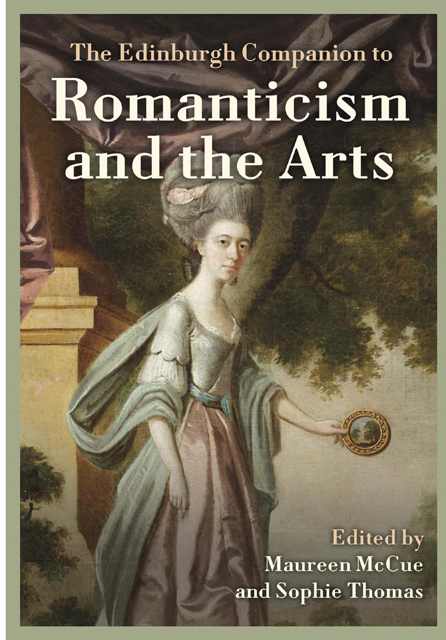13 - Sound and Vision in Blake’s London
Published online by Cambridge University Press: 25 April 2023
Summary
The relationship between the arts underwent a profound transformation in the Romantic period. Under the influence of German idealist philosophy, music – elite instrumental music, in particular – took up a newly elevated position, celebrated for its purported power to convey the universal and ineffable. In a famous review of Beethoven’s Fifth Symphony (1808), published in 1810, E. T. A. Hoffmann claimed that ‘Beethoven’s instrumental music unveils before us the realm of the mighty and the immeasurable’ and ‘the pain of infinite yearning’: ‘Only in this pain […] do we live on as ecstatic visionaries.’ For Hoffmann, this was art that went beyond vulgar representation to access instead sublime obscurity: ‘Beethoven’s music sets in motion the machinery of awe, of fear, of terror, of pain, and awakens that infinite yearning which is the essence of romanticism. He is therefore a purely romantic composer’ (1989, 97–8). For Samuel Taylor Coleridge, perhaps the most important conduit of German idealism in Britain, music occupied a place at the apex of the arts precisely because of its liberation from the local and specific: ‘The generic how superior to the particular illustrated in Music, how infinitely more perfect in passion & its transitions than even Poetry – Poetry than Painting’ (2002, 58).
As part of this shift, Romantic writers aligned music with poetry in its ability to reach beyond mimesis. As M. H. Abrams writes in his classic study The Mirror and the Lamp, Romantic aesthetics displaced the long-standing tradition of ut pictura poesis (‘as is poetry, so is painting’, from Horace’s Ars Poetica): ‘In place of painting, music becomes the art frequently pointed to as having a profound affinity with poetry. For if a picture seems the nearest thing to a mirror-image of the external world, music, of all the arts, is the most remote’ (Abrams 1953, 50). These positions were far from fixed, however, and recent scholarship has focused instead on the often fluid relationship between the arts. For example, Thomas Tolley has argued that the success of Haydn’s music in Britain was based on its use of programmatic effects, which appealed to an audience trained in attentive looking (2001). In a similar vein, Deirdre Loughridge has shown how listening practices and ways of thinking about music were influenced by new optical technologies (including the magnifying glass, peepshow, shadow-play and magic lantern), creating a hybrid ‘audiovisual culture’ (2016, 10–11).
- Type
- Chapter
- Information
- The Edinburgh Companion to Romanticism and the Arts , pp. 237 - 254Publisher: Edinburgh University PressPrint publication year: 2022

